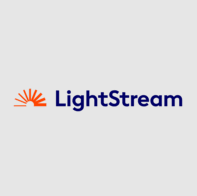If you’re a homeowner looking to access cash for a major expense, consider a U.S. Bank Cash-Out Refinance. This option allows you to leverage your home equity, potentially unlocking funds for renovations, debt consolidation, or other financial needs. U.S. Bank provides a dedicated service to help clients navigate the intricacies of turning home equity into liquid cash. With several benefits and flexible terms, it can be a viable financial solution.
Homeowners often accumulate significant equity in their properties over the years. This equity represents the portion of the home’s value that is not burdened by liens or loans. While it serves as a financial cushion, this value is essentially tied up in the property. By utilizing a U.S. Bank Cash-Out Refinance, homeowners can convert this equity into cash that can be used to meet current financial needs without selling the property.
Understanding the U.S. Bank Cash-Out Refinance

Cash-out refinancing is a method of refinancing your existing mortgage to extract cash from your home’s equity. With U.S. Bank, this process involves applying for a new mortgage with a higher principal than your current one. At closing, you receive the difference as a lump sum, giving you immediate access to cash. This tool is particularly useful for those looking to consolidate high-interest debt, fund home improvements, or invest in educational opportunities.
U.S. Bank’s refinancing service includes competitive rates and various loan options to suit different financial scenarios. This flexibility makes the cash-out refinance an attractive opportunity for homeowners seeking to optimize their financial resources without increasing their monthly payments substantially. Additionally, U.S. Bank provides resources and guidance to help you through the refinancing process, ensuring you understand every step along the way.
Benefits of cash-out refinancing with U.S. Bank
One of the primary benefits of opting for a cash-out refinance through U.S. Bank is the ability to secure lower interest rates compared to personal loans and credit cards. This is advantageous for consolidating higher-interest debts, allowing for manageable monthly payments. Additionally, it provides an opportunity to extend or modify your repayment terms, offering further budget flexibility.
Another benefit is potential tax advantages. Interest on your mortgage might be tax-deductible, unlike interest from most credit cards and personal loans. This can provide savings that enhance the overall financial benefits of refinancing. However, it’s wise to consult with a tax professional to understand how this could apply to your specific situation.
Qualifying for a cash-out refinance
To qualify for a cash-out refinance, you need to meet certain requirements, beginning with sufficient home equity. U.S. Bank typically requires at least 20% equity, which you can calculate by subtracting your current mortgage balance from your home’s current market value. For example, if your home is valued at $300,000 and you owe $150,000, you have $150,000 in equity, making you eligible for refinancing options.
Another key factor is your credit score. A higher credit score improves your chances of securing a lower interest rate, which can significantly affect the cost-effectiveness of your refinance. U.S. Bank clients can use their free credit score tool to monitor their credit and ensure they meet necessary criteria.
The process of cash-out refinancing
Embarking on a cash-out refinance with U.S. Bank begins with an assessment of your home equity and a clear understanding of your financial needs. After determining your equity, the next step is calculating your maximum loan amount. Normally, lenders allow you to borrow up to 80% of your home’s value. However, this percentage can be higher if you have a robust credit profile.
Once your potential borrowing amount is established, it’s essential to consider the different refinance loan options. U.S. Bank offers various loans, including conventional fixed-rate and adjustable-rate mortgages (ARMs). Each has unique benefits, such as rate stability for fixed-rate loans or lower initial payments for ARMs, which suit different financial strategies and timelines.
Exploring loan options with U.S. Bank
U.S. Bank offers an array of loan products to meet your specific refinancing goals. Conventional fixed-rate loans are an excellent choice for those planning to remain in their home long-term, providing rate consistency. U.S. Bank’s typical fixed-rate starts at 7.125%, with an APR of 7.272%, delivering stable payments and facilitating long-term financial planning.
Alternatively, adjustable-rate mortgages (ARMs) offer lower introductory rates, making them suitable for those planning to move or payoff the balance before the rate adjusts. Their initial rates are more competitive and cover initial rate periods lasting from 5 to 10 years, ensuring cost savings during this period. Conventional 10/6 ARM rates start at 7.375% with an APR of 7.700%.


